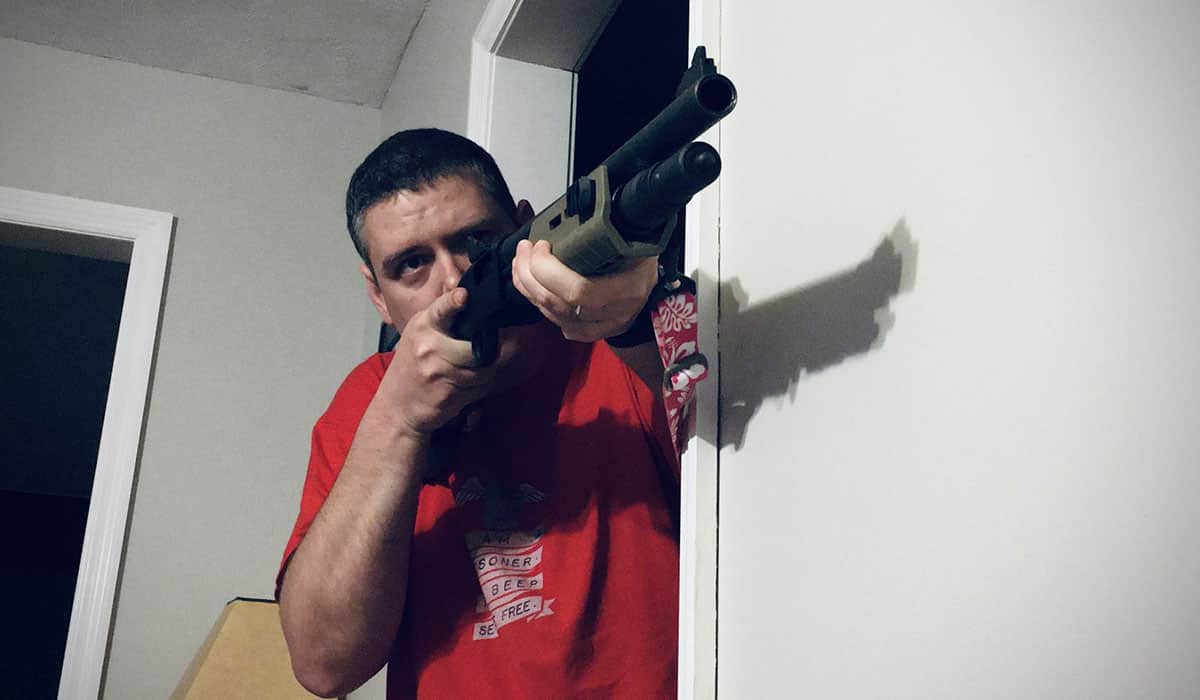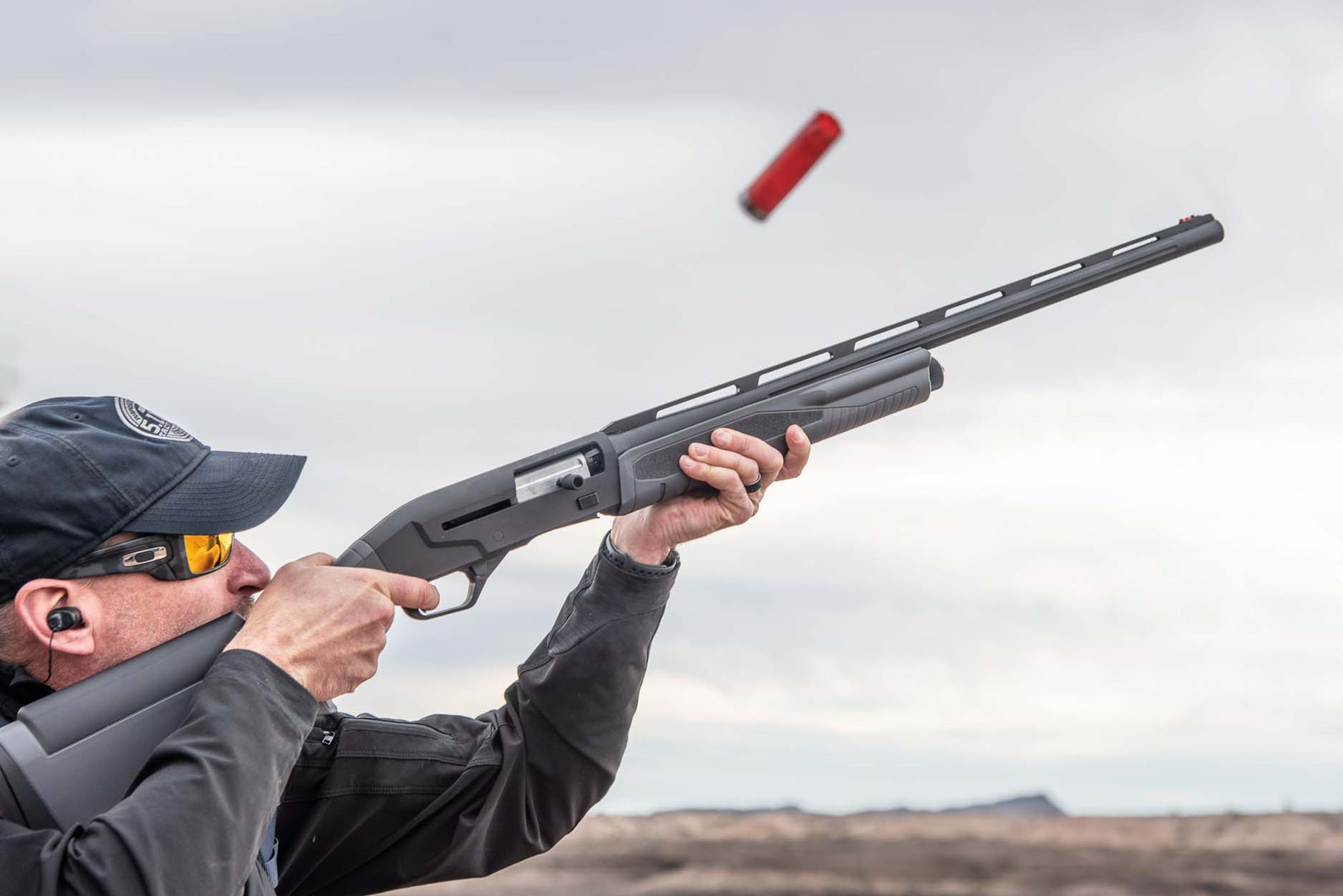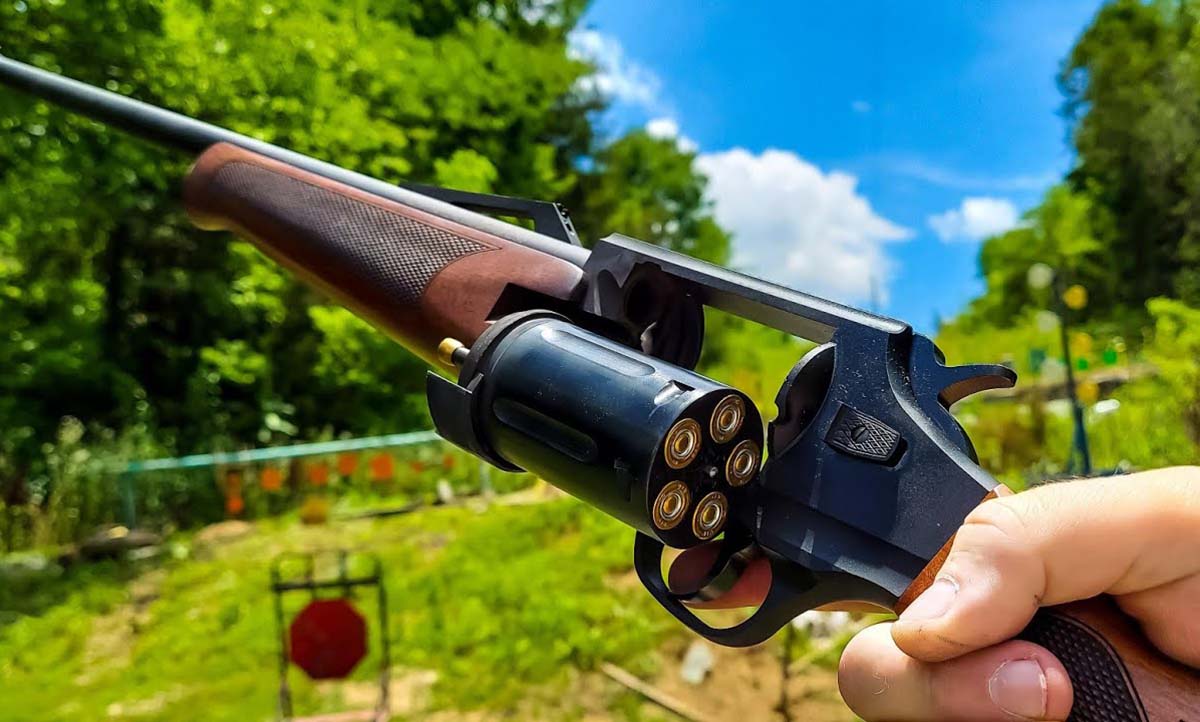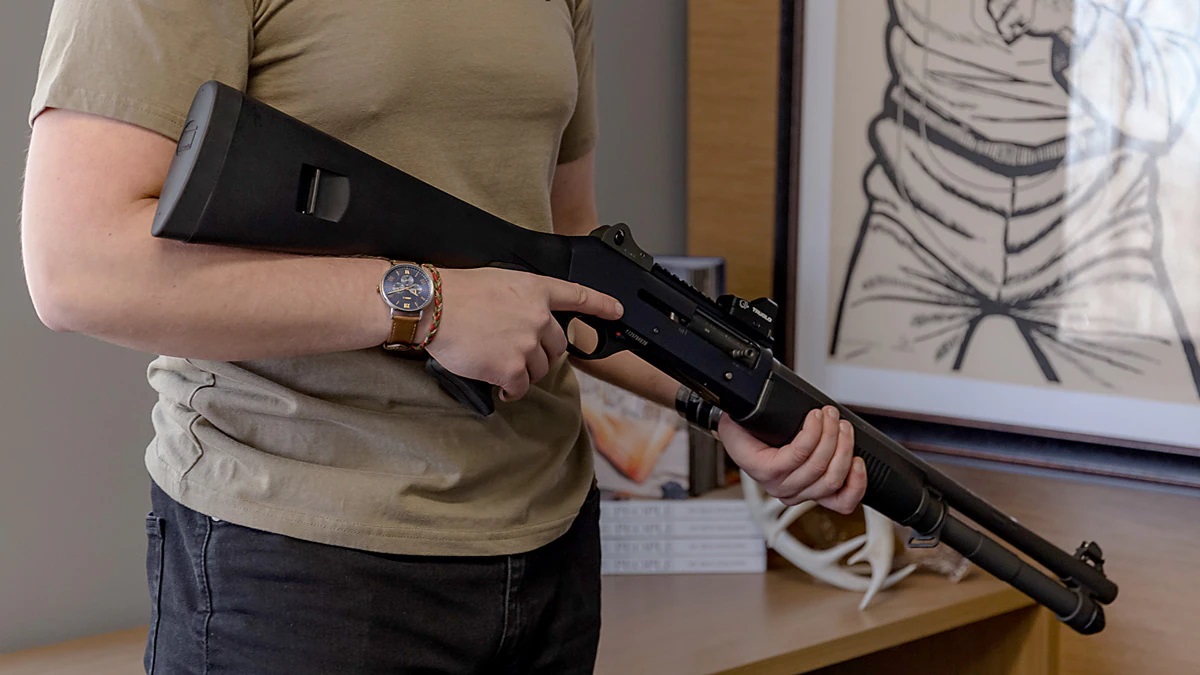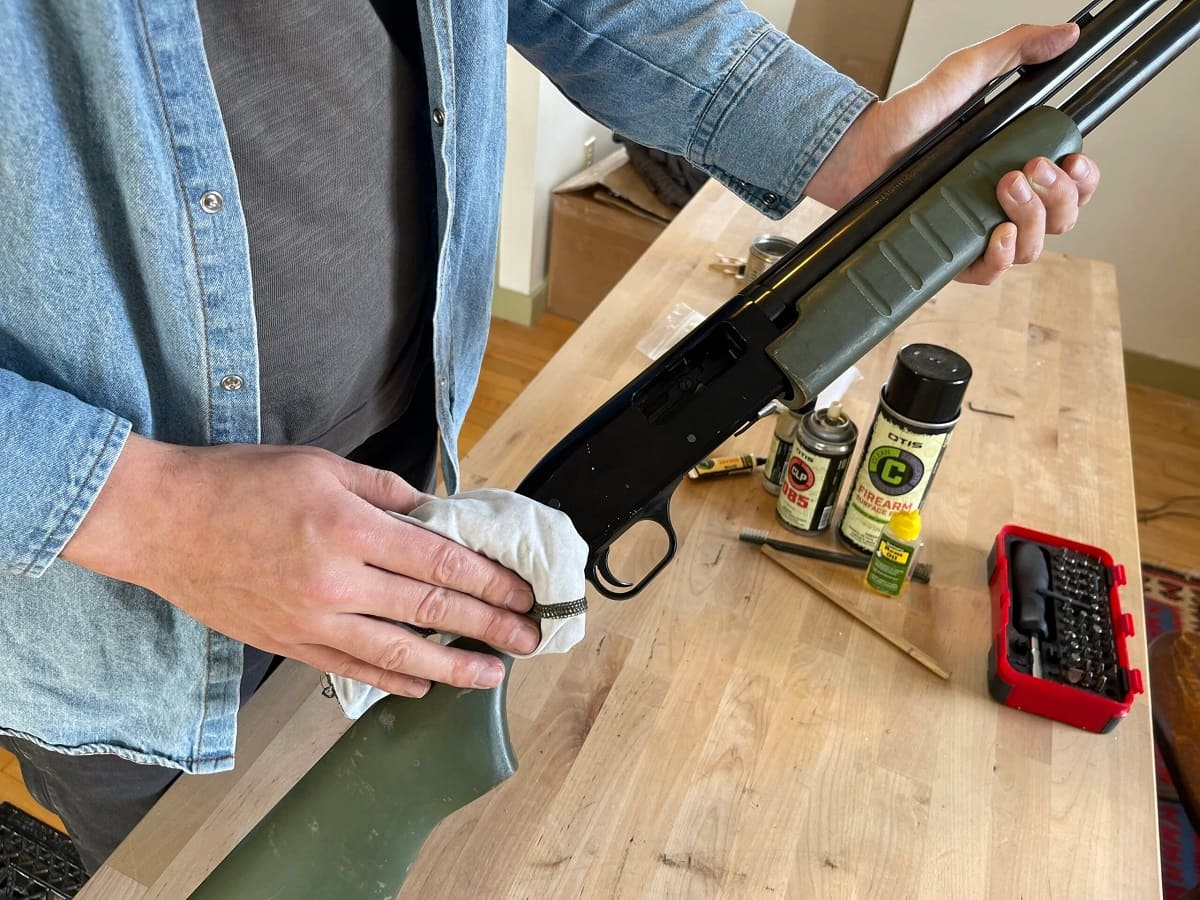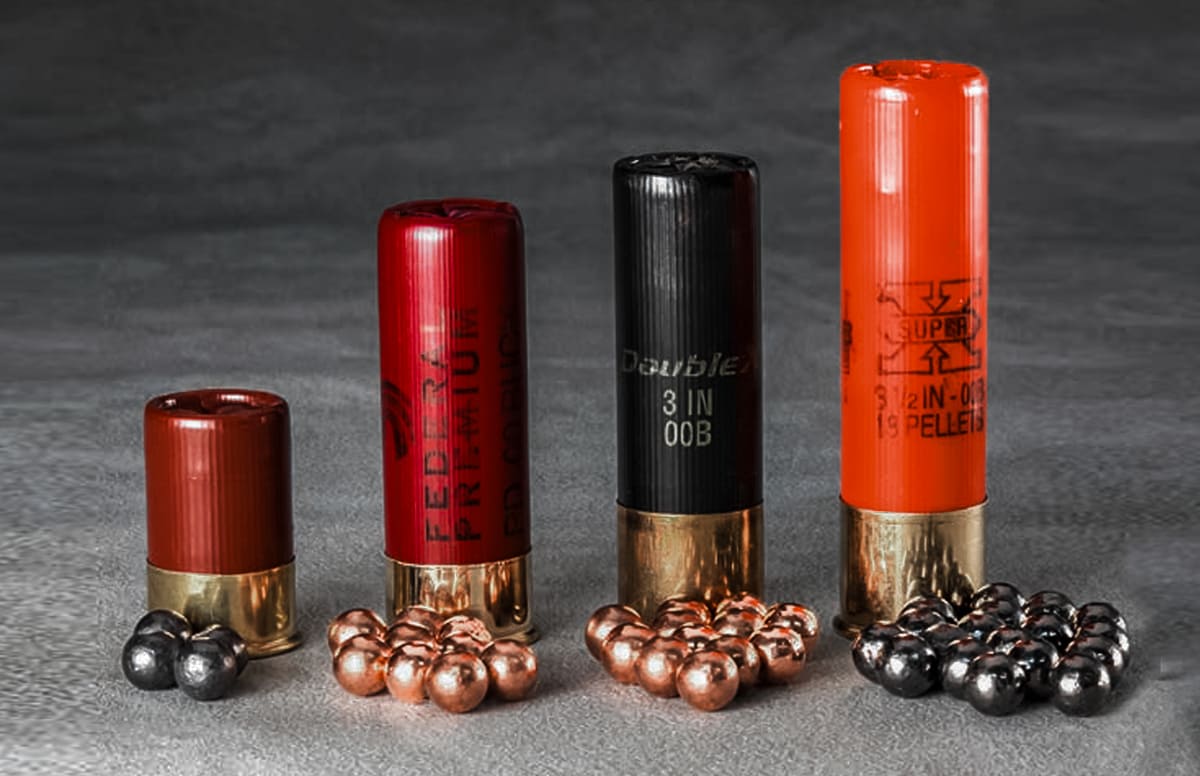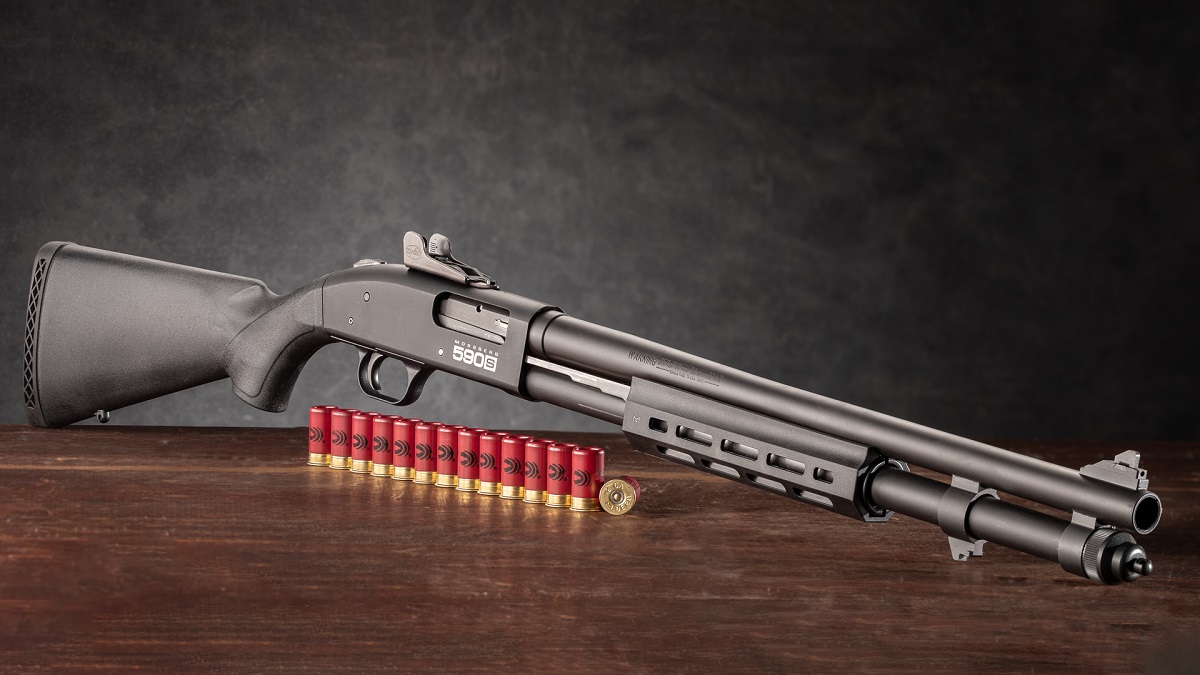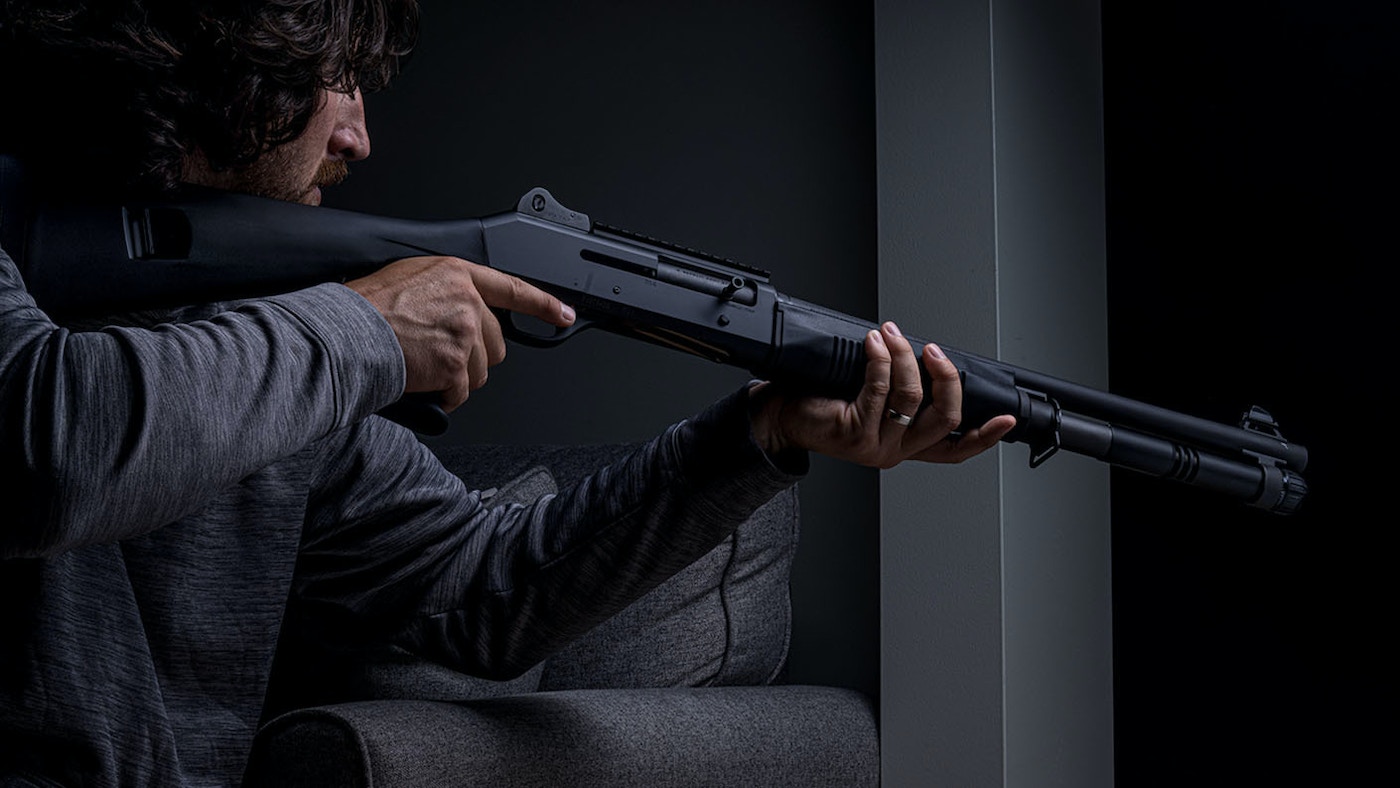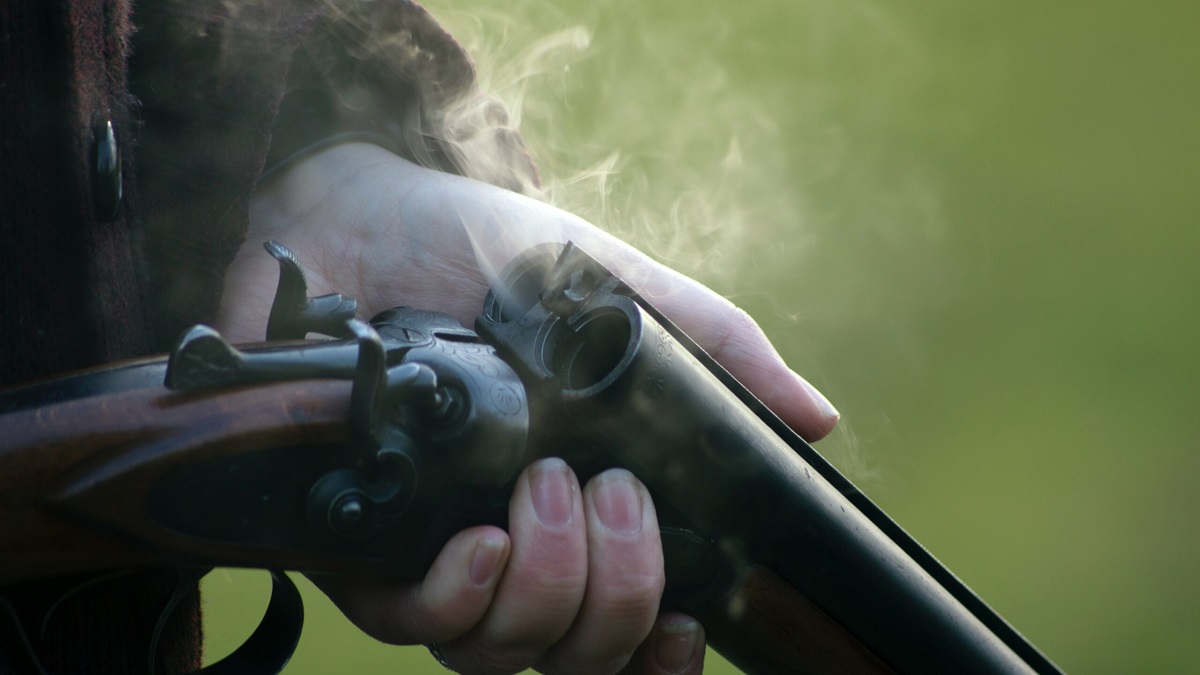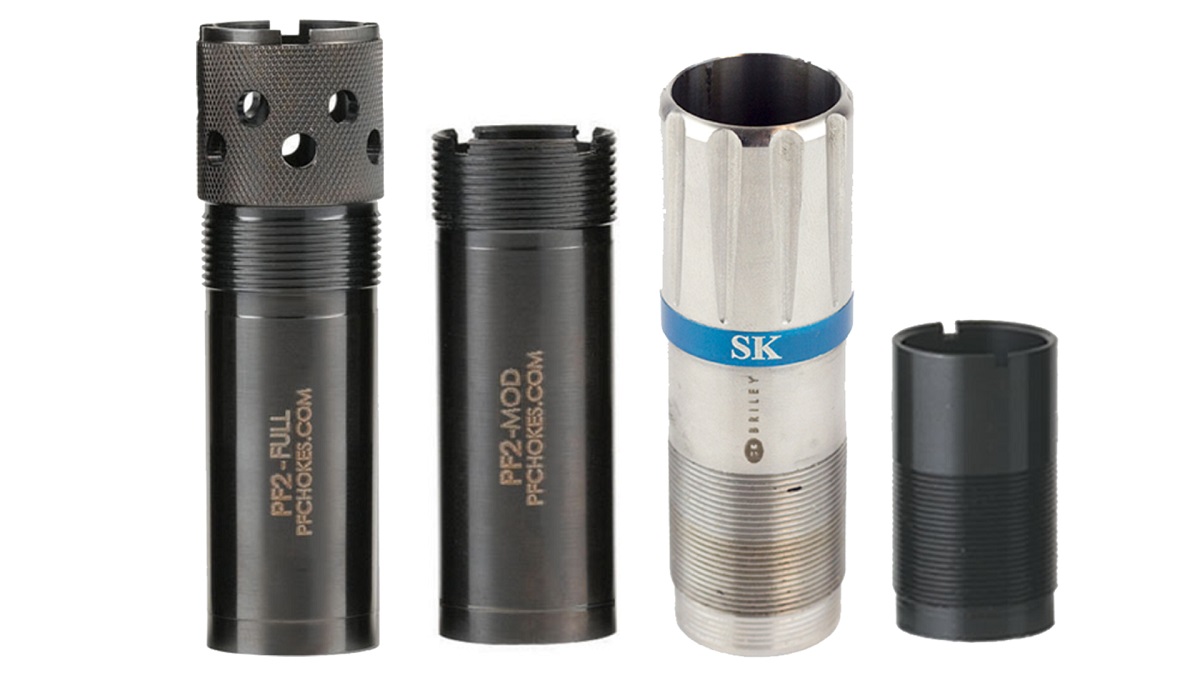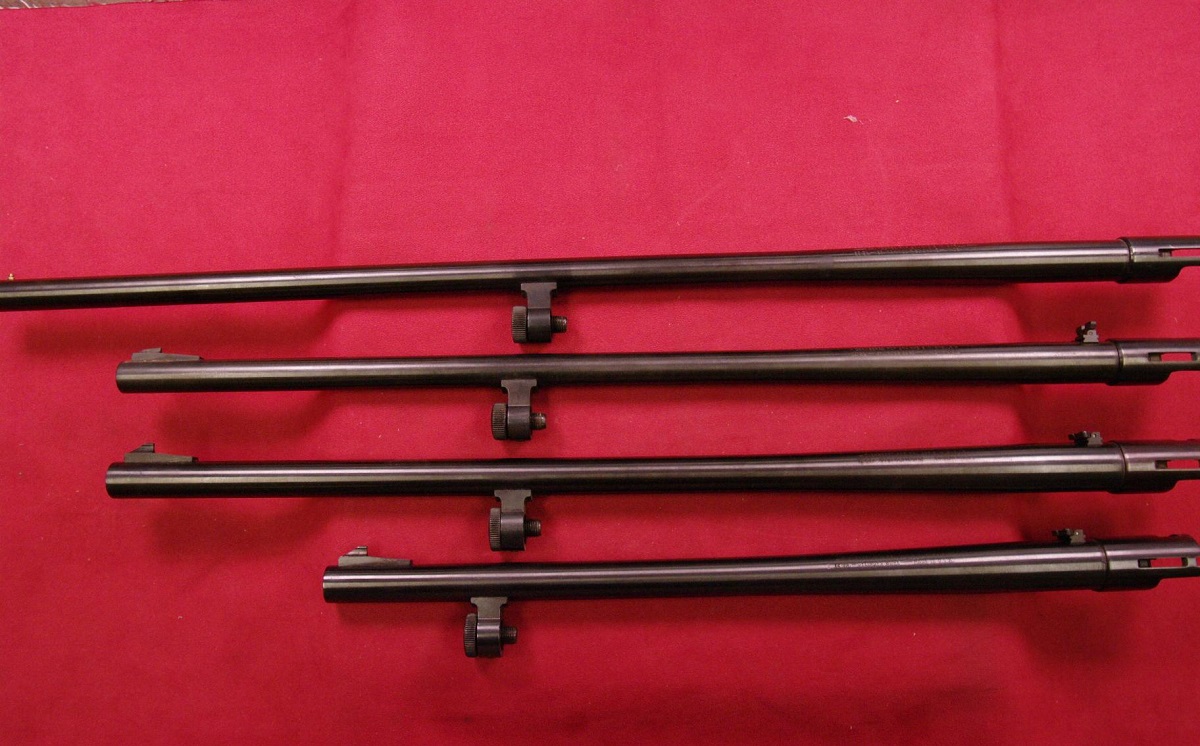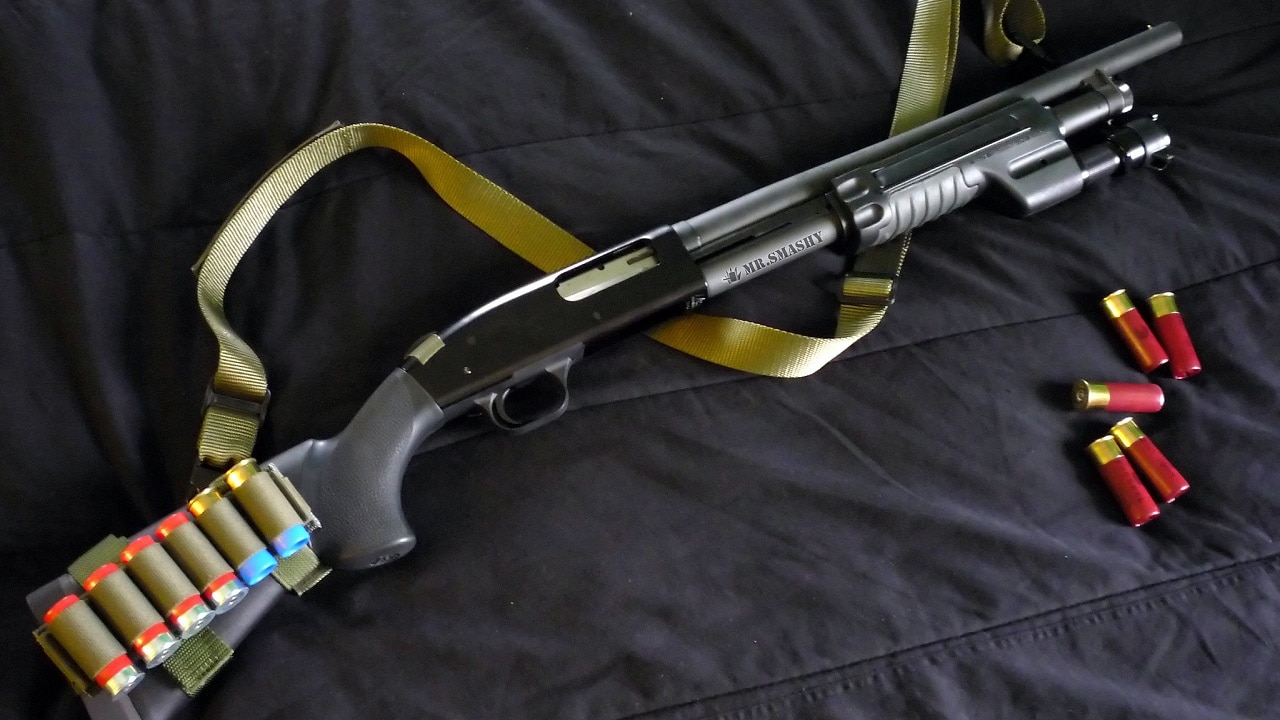Home>Home Security and Surveillance>How To Pattern A Shotgun For Home Defense
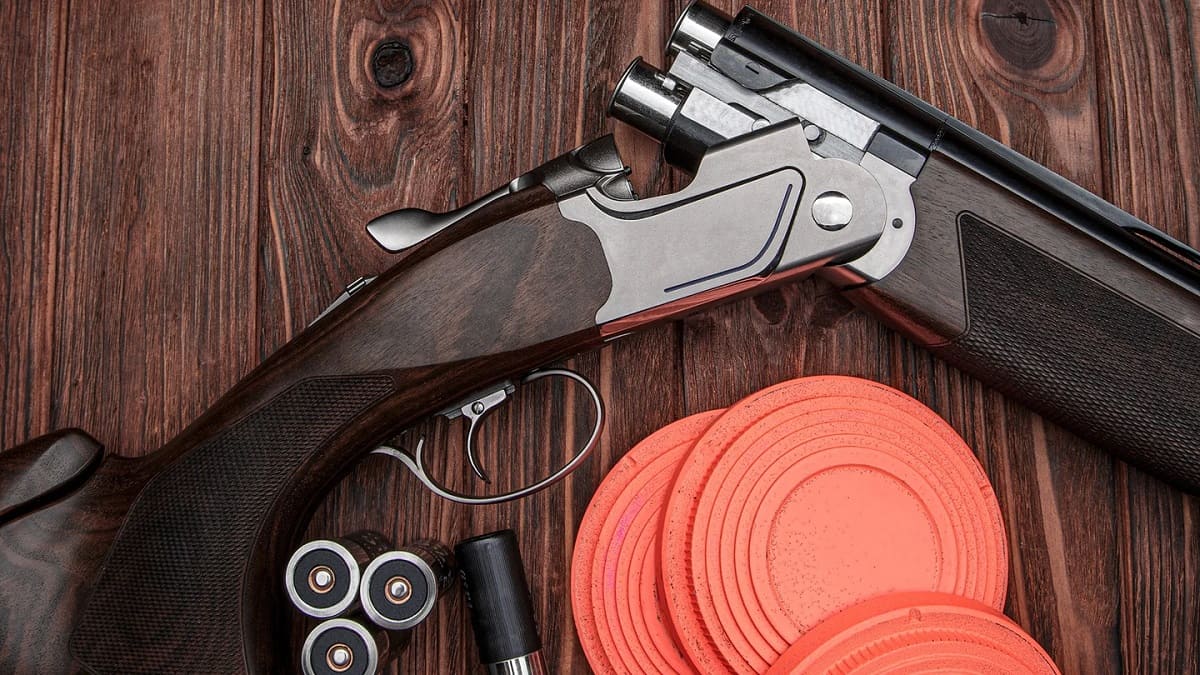

Home Security and Surveillance
How To Pattern A Shotgun For Home Defense
Modified: March 6, 2024
Learn how to effectively pattern your shotgun for home defense with our expert tips. Enhance your home security and surveillance with this essential technique.
(Many of the links in this article redirect to a specific reviewed product. Your purchase of these products through affiliate links helps to generate commission for Storables.com, at no extra cost. Learn more)
Introduction
When it comes to home security and surveillance, having a reliable and effective defense system is crucial. While there are various options available, shotguns have long been a popular choice for protecting one’s home and loved ones. However, simply owning a shotgun is not enough to ensure your safety. It is essential to understand the concept of shotgun patterning and how it plays a vital role in home defense.
Shotgun patterning refers to the process of determining the spread of pellets when the shotgun is fired. By understanding the pattern, you can gauge the shotgun’s effective range and accuracy, enabling you to make more informed decisions in self-defense situations. Proper shotgun patterning is essential to ensure that when you pull the trigger, you have a higher chance of hitting your target and minimizing collateral damage.
This article will guide you through the importance of shotgun patterning for home defense, factors to consider when patterning your shotgun, selecting the right ammunition, setting up your patterning target, the steps to pattern your shotgun, analyzing and adjusting the pattern, and applying it to different home defense scenarios.
By the end, you will have a comprehensive understanding of shotgun patterning and how to apply it effectively in your home security strategy. So, let’s dive in and explore the world of shotgun patterning for home defense.
Key Takeaways:
- Shotgun patterning is crucial for home defense, helping you understand your shotgun’s effective range, accuracy, and potential for collateral damage. It enables informed decisions and enhances safety for you and your loved ones.
- Factors such as choke selection, ammunition type, distance to target, and shot size play a vital role in shotgun patterning. Regular practice and experimentation with different loads and distances further enhance your understanding of your shotgun’s pattern.
Read more: How To Load A Shotgun For Home Defense
Understanding Shotgun Patterning
Shotgun patterning involves understanding how the pellets disperse when you fire the shotgun. Unlike a rifle or a handgun that fires a single projectile, shotguns utilize shells that contain multiple pellets. These pellets spread out as they travel, creating a wider shot pattern.
The size of the shot pattern depends on various factors, including the choke of the shotgun, the type of ammunition used, and the distance to the target. The choke refers to the constriction at the end of the shotgun barrel that controls the spread of the shot. Shotguns can have different choke options, such as cylinder bore (no restriction), improved cylinder, modified, full choke, and others.
The type of ammunition is another crucial factor in shotgun patterning. Different loads, such as birdshot, buckshot, or slug, will produce different patterns. Birdshot consists of multiple small pellets, buckshot has larger pellets, and slugs are solid projectiles. Each type of ammunition behaves differently when fired, affecting the spread pattern.
Understanding shotgun patterning is essential for several reasons. Firstly, it allows you to determine the effective range of your shotgun. By patterning your shotgun, you can identify the distance at which the pellets maintain a dense enough pattern to strike the intended target effectively. This knowledge helps you gauge the distance at which you can engage potential threats.
Secondly, shotgun patterning helps you assess the accuracy of your shotgun. By examining the pattern, you can identify any inconsistencies in the pellet spread. This information allows you to make adjustments to your aim or equipment, ensuring that you maximize the chances of hitting your target.
Finally, shotgun patterning assists in understanding the potential for collateral damage. Shotguns are not precision weapons like rifles, meaning the pellets can spread out considerably as they travel. By knowing the pattern, you can better estimate the potential area of effect and make decisions to avoid unintended targets.
Now that we have covered the basics of shotgun patterning, let’s explore why it is crucial for home defense.
Importance of Shotgun Patterning for Home Defense
Shotgun patterning plays a significant role in home defense scenarios. When faced with an intruder or potential threat in your home, you need to rely on your firearm to provide effective protection. Shotgun patterning ensures that your shotgun is optimized for self-defense and increases your chances of stopping a threat while minimizing the risk of collateral damage. Here are a few reasons why shotgun patterning is crucial for home defense:
1. Accuracy and Precision: Patterning your shotgun allows you to understand its effective range and accuracy. By knowing how the shot pattern spreads at various distances, you can adjust your aim and make informed decisions when engaging a target. This precision is essential in a home defense scenario where every shot counts.
2. Optimal Pellet Distribution: Shotgun patterning helps you identify the ammunition and choke combination that provides the most desirable pellet distribution. You can determine which load and choke combination produce a dense pattern within your intended engagement range. This knowledge ensures that you have the necessary stopping power to neutralize a threat effectively.
3. Identification of Equipment Issues: Patterning your shotgun can reveal any inconsistencies or malfunctions in your firearm or ammunition. If you notice stray pellets or irregular patterns, it may indicate a problem with your shotgun or the ammunition you’re using. Identifying these issues early on allows you to address them and ensure that your firearm functions reliably when it matters most.
4. Mitigation of Collateral Damage: Shotguns have a wider shot pattern compared to other firearms, making the risk of collateral damage higher. Patterning your shotgun helps you understand the spread of the pellets, allowing you to make calculated decisions to avoid hitting unintended targets. This knowledge is crucial in a home defense situation where loved ones or valuable possessions may be in close proximity.
5. Confidence and Preparedness: Patterning your shotgun gives you the confidence and peace of mind in knowing that you are well-prepared for a home defense situation. Understanding your shotgun’s capabilities and limitations enables you to make quick and effective decisions under stress. This confidence can make a significant difference when faced with a potentially life-threatening situation.
By taking the time to pattern your shotgun for home defense, you are investing in your safety and the security of your loved ones. It provides the necessary knowledge to make informed decisions, enhances your accuracy, and minimizes the risk of unintended consequences. Now, let’s explore the factors you need to consider when patterning your shotgun.
Factors to Consider for Shotgun Patterning
When patterning your shotgun for home defense, there are several important factors to consider. These factors will help you optimize your shotgun for self-defense and ensure that you achieve the desired results when engaging a threat. Here are the key factors to keep in mind:
1. Choke Selection: The choke of your shotgun plays a crucial role in determining the spread of the shot pattern. Different chokes offer varying levels of constriction, affecting the distribution of the pellets. Depending on the distance you anticipate engaging targets, you may opt for a more open choke, such as cylinder bore or improved cylinder, for a wider spread pattern, or a tighter choke, like modified or full, for a tighter pattern at longer distances.
2. Ammunition Type: The type of ammunition you use significantly impacts the shot pattern. Different loads, such as birdshot, buckshot, or slugs, behave differently when fired. Birdshot contains multiple small pellets, buckshot has larger pellets, and slugs are solid projectiles. Each type of ammunition produces a distinct pattern and has varying effectiveness at different distances. Consider the intended purpose and engagement range when selecting the appropriate ammunition.
3. Ammunition Brand and Load: Within each type of ammunition, there are different brands and specific loads available. Each brand may have variations in the size, weight, and composition of the pellets, resulting in different patterns and penetration capabilities. It is essential to test and evaluate various brands and loads to determine which one performs optimally in your shotgun.
4. Distance to Target: The distance between you and the potential threat plays a significant role in shotgun patterning. Understanding how the shot pattern opens up at different distances will help you gauge the effective range of your shotgun. It is important to practice and pattern your shotgun at the distances commonly encountered within your home to ensure optimal performance.
5. Shot Size: The size of the shotgun pellets can impact the pattern and penetration. Smaller shot sizes tend to spread out quickly but may lack sufficient stopping power at longer distances. Larger shot sizes offer more penetration but may have a tighter pattern. Consider the potential home defense scenarios you may encounter and select shot sizes accordingly.
6. Environmental Factors: Weather conditions and environmental factors can influence shotgun patterning. Factors such as wind, humidity, and temperature can impact the behavior of the pellets, altering the shot pattern. It is important to take these variables into account when patterning your shotgun and adjusting your technique accordingly.
Considering these factors when patterning your shotgun will help you make informed decisions about your equipment and ammunition choices. This understanding will enable you to fine-tune your shotgun for optimal performance in a home defense situation. With these factors in mind, let’s move on to selecting the right ammunition for your shotgun.
Selecting the Right Ammunition
Choosing the right ammunition for your shotgun is a critical step in optimizing its performance for home defense. The type, size, and brand of ammunition you select will directly impact the effectiveness and pattern of your shotgun. Here are some factors to consider when selecting ammunition:
1. Purpose: Determine the intended purpose of your shotgun for home defense. Are you looking for ammunition that provides a wide spread for closer engagements or more focused penetration for longer distances? Consider the potential scenarios you may encounter in your home and select ammunition that aligns with your needs.
2. Shot Size: Shotguns are available in various shot sizes, ranging from smaller shot sizes like #8 to larger ones like #00 buckshot. Smaller shot sizes are ideal for close-quarters engagements where the spread is crucial, while larger shot sizes offer better penetration. Assess the potential distances you may engage targets and select a shot size that balances spread and penetration.
3. Ammunition Type: Shotguns offer various types of ammunition, including birdshot, buckshot, and slugs. Birdshot, with its numerous small pellets, is best suited for small game hunting and has limited penetration for home defense. Buckshot, on the other hand, contains larger pellets and offers better stopping power. Slugs are solid projectiles ideal for longer-range precision shots but may overpenetrate in close-quarters scenarios. Consider the trade-offs between these ammunition types and choose one that aligns with your home defense requirements.
4. Ammunition Brand and Load: Different ammunition brands may have variations in the size, weight, and performance of their pellets. It is essential to test and evaluate different brands and loads to determine the one that provides consistent patterns and reliable performance in your shotgun. Research user reviews and seek recommendations from reputable sources to narrow down your choices.
5. Legal Considerations: Check your local laws and regulations to ensure that the ammunition you select is legal for home defense purposes. Some jurisdictions may have restrictions on certain ammunition types or shot sizes, so it is crucial to be aware of any legal limitations.
Once you have considered these factors, it is recommended to conduct live fire testing with your selected ammunition to observe the pattern and performance. This will allow you to fine-tune your shotgun’s setup and ensure that you have the right ammunition for home defense situations.
Now that you understand how to select the right ammunition, let’s move on to setting up your patterning target.
Practice shooting your shotgun at different distances and angles to understand the spread pattern. This will help you know where your pellets will go and how to aim effectively in a home defense situation.
Read more: How To Pick A Shotgun For Home Defense
Set Up Your Patterning Target
Setting up a proper patterning target is essential to accurately assess the performance of your shotgun and ammunition. The target will allow you to examine the spread and consistency of your shot pattern, providing valuable information for adjusting your equipment and technique. Here’s how you can set up your patterning target:
1. Choose the Right Target: Select a target that offers a clear and defined aiming point. This can be a specialized patterning target with a grid or a simple large sheet of paper or cardboard. Ensure that the target is large enough to capture multiple shots and allow you to examine the pattern effectively.
2. Determine the Distance: Decide on the distance at which you want to pattern your shotgun. This will depend on the intended engagement range for home defense scenarios. Common distances range from 10 to 25 yards. Ensure that you have a safe and appropriate shooting environment for setting up the target at the chosen distance.
3. Create a Shooting Rest: It is important to stabilize your shotgun during the patterning process to eliminate unnecessary variables. You can use a shooting rest or sandbags to provide support and maintain consistency shot after shot. This will help minimize shooter-induced errors and give you a more accurate representation of your shotgun’s pattern.
4. Establish Aiming Point: Mark a distinct aiming point on your target. This can be a small circle or an ‘X’ that you consistently aim at for each shot. Having a consistent aiming point allows you to gauge consistency across multiple shots and accurately evaluate the pattern’s center.
5. Set Up Clear Backstop: Ensure that you have a safe and clear backstop behind the target. The pellets will pass through the target, and having a solid backstop like a mound of dirt or a dense material will prevent any potential injury or damage from stray pellets.
6. Take Necessary Safety Precautions: Before starting the patterning process, always follow proper firearm safety guidelines. Ensure that the area is clear of any individuals or obstructions, and wear appropriate hearing and eye protection. Treat every situation as if you were on the range or in a live-fire environment.
Setting up your patterning target in this way will provide a controlled environment to evaluate your shotgun’s pattern and make any necessary adjustments. Once the target is set, you are ready to start patterning your shotgun. In the next section, we will go through the steps to pattern your shotgun effectively.
Steps to Pattern Your ShotgunPatterning your shotgun involves a systematic approach to assess the shot pattern produced by your firearm. By following these steps, you can gather valuable information about your shotgun’s performance and make any necessary adjustments. Here are the steps to pattern your shotgun:
1. Load Your Shotgun: Begin by loading your shotgun with the selected ammunition. Ensure that the firearm is unloaded and follow proper safety protocols when inserting the ammunition.
2. Position Yourself and Align Your Sight: Take a steady shooting position, ensuring that you have a clear line of sight to the target. Align your sight picture by placing the front sight or bead at the center of your aiming point on the target.
3. Fire at the Target: Aim carefully and squeeze the trigger to fire a single shot at the target. Maintain a steady grip and focus on maintaining proper form throughout the shot process.
4. Inspect the Shot Pattern: Examine the shot pattern on the target. Pay attention to the distribution of the pellets and observe any inconsistencies or irregularities. Look for a dense central area and evaluate how the pattern spreads as it moves away from the center.
5. Document and Repeat: Take note of the pattern’s characteristics, such as the overall spread, the density in the center, and any specific patterns or anomalies. Repeat the process multiple times, firing additional shots, and adjusting your aim slightly for each shot. This will help gather more data and verify the consistency of the pattern.
6. Measure the Pattern: Measure the overall spread of the pattern from the farthest pellets on each side. This will give you an idea of the effective width of the pattern at the given distance. It is useful to use a measuring tool or ruler to obtain accurate measurements.
7. Analyze the Results: Analyze the gathered data and make note of any areas of concern or areas that require adjustment. Take into account the intended engagement range for home defense scenarios and assess whether the pattern meets your requirements.
8. Make Adjustments: If necessary, make adjustments to your sighting, choke selection, or ammunition load. You might need to switch to a different choke or try different ammunition brands or loads to achieve the desired pattern. Repeat the patterning process with the adjustments made and compare the results.
By following these steps and methodically evaluating your shotgun’s pattern, you can gather valuable information about its performance. Pattern your shotgun over different distances to gain a comprehensive understanding of its capabilities. This process will help you make the necessary adjustments to ensure your shotgun is optimized for home defense scenarios.
Now that you have analyzed and adjusted your shotgun’s pattern, it’s time to consider how to apply the pattern to various home defense scenarios.
Analyzing and Adjusting Your Shotgun’s Pattern
Once you have fired multiple shots and obtained a pattern on your target, it is crucial to analyze and understand the results. This analysis will help you make any necessary adjustments to optimize your shotgun’s performance for home defense. Here are the key steps to analyzing and adjusting your shotgun’s pattern:
1. Examine the Pattern: Carefully examine the shot pattern on your target. Look for the density of pellets in the center of the pattern and observe how the spread varies as you move towards the edges. Note any significant anomalies, such as gaps, flyers, or irregular distributions.
2. Evaluate Consistency: Assess the consistency of the pattern across multiple shots. Compare the patterns from each shot to identify any variations or inconsistencies. Consistency is crucial for accurate shooting and reliable performance.
3. Measure the Spread: Measure the overall spread of the pattern by determining the distance between the farthest pellets on opposite sides of the pattern. This measurement will give you an idea of the effective width of the pattern and how it relates to your intended engagement range.
4. Adjust the Sight Picture: If the pattern consistently deviates from your aiming point, consider adjusting your sight picture. Depending on the shotgun’s sights, you may need to adjust the front sight or bead to align with the center of the pattern. This adjustment will help ensure that your shots hit where you aim.
5. Experiment with Choke Selection: If you observe a pattern that is too tight or too open, you can experiment with different choke options. If the pattern is too tight, try using a more open choke to achieve a wider spread. Conversely, if the pattern is too open, switching to a tighter choke can help concentrate the pellets for improved accuracy and effectiveness.
6. Test Different Ammunition Loads: If you are unsatisfied with the pattern or if it does not match your desired performance, try testing different ammunition loads. Varying the shot size, brand, or load can have a significant impact on your shotgun’s pattern. Experiment with different options to find the one that produces the desired results.
7. Repeat the Patterning Process: Once you have made any adjustments to your sighting or equipment, repeat the patterning process. Fire multiple shots and analyze the new pattern to determine if the adjustments have improved the performance. This iterative process may require several rounds of adjustments and testing to achieve the desired pattern.
Remember, the goal of analyzing and adjusting your shotgun’s pattern is to optimize its performance for home defense scenarios. By fine-tuning your shotgun based on the observed patterns, you can increase the chances of hitting your target effectively and minimize the risk of collateral damage.
Now that you have analyzed and adjusted your shotgun’s pattern, let’s explore how you can apply this knowledge to different home defense scenarios.
Applying the Pattern to Home Defense Scenarios
Understanding and applying the pattern of your shotgun is crucial when it comes to home defense scenarios. By considering the spread, density, and effective range of your shotgun’s pattern, you can make informed decisions to protect yourself and your loved ones effectively. Here’s how you can apply the pattern to different home defense scenarios:
1. Close Quarters Engagement: In a close-quarters scenario, such as inside your home, the spread of your shotgun’s pattern becomes even more critical. The wider spread associated with open chokes and smaller pellets, like birdshot, can be advantageous in these situations. It helps increase the chances of hitting the target, especially when precision aiming may not be feasible due to stress or responsive actions required.
2. Barrier Penetration: Consider the potential need to shoot through barriers, such as doors or walls, in a home defense situation. The size and composition of the pellets, as well as the distance to the barrier, will affect penetration. Slugs or buckshot with larger pellets may penetrate barriers more effectively than smaller birdshot pellets. However, be aware of the potential for overpenetration, which could endanger others on the opposite side of the barrier.
3. Engaging Multiple Intruders: Being aware of the spread pattern and density of your shotgun allows you to make decisions when facing multiple intruders. Understanding the limitations of your pattern and balancing the need for accuracy and spread can help you prioritize targets and mitigate the risk of collateral damage.
4. Assessing Engagement Distance: By knowing the effective range of your shotgun’s pattern, you can assess the engagement distance in a home defense scenario. This knowledge allows you to position yourself in an advantageous location, optimizing your chances of hitting your target while minimizing the potential for stray pellets to cause unintended damage or harm.
5. Practice and Familiarity: Regularly practicing with your shotgun and familiarizing yourself with its pattern in different scenarios is essential. By understanding how the pattern behaves at various distances and in different shooting positions, you can improve your shooting skills and make more accurate split-second decisions during a high-stress situation.
6. Continual Assessment and Adaptation: Patterns can vary depending on factors such as ammunition, chokes, and environmental conditions. Continually assess your shotgun’s pattern and make any necessary adaptations. Stay up to date with advancements in shotgun technology and ammunition to ensure that your home defense strategy is optimized.
Remember, shotgun patterning provides valuable insights and knowledge that can support your decision-making in self-defense situations. Regularly assess and apply your shotgun’s pattern to increase your effectiveness and ensure the safety of yourself and your loved ones in a home defense scenario.
Now that you have a comprehensive understanding of shotgun patterning and its application to home defense, remember to prioritize safety and continue to practice responsible firearm handling and storage.
Stay informed, be prepared, and make the most of your shotgun’s capabilities to protect what matters most.
Read more: What To Put On Home Defense Shotgun
Conclusion
Shotgun patterning is a critical aspect of home defense and surveillance. Understanding and optimizing the performance of your shotgun can greatly enhance your ability to protect yourself, your loved ones, and your property. By carefully patterning your shotgun, selecting the right ammunition, and analyzing and adjusting the pattern, you can ensure that your shotgun is tailored to your specific needs and home defense scenarios.
Through the patterning process, you gain valuable insights into your shotgun’s effective range, accuracy, and potential for collateral damage. This knowledge allows you to make informed decisions, improving your chances of hitting your target while minimizing the risk of unintended consequences.
Consider factors such as choke selection, ammunition type and brand, distance to target, and shot size when patterning your shotgun. Regular practice and experimentation with different loads, distances, and shooting positions can further enhance your understanding of your shotgun’s pattern and its application in various home defense scenarios.
Remember to prioritize safety at all times. Familiarize yourself with firearm safety procedures, follow local laws and regulations, and always exercise responsible firearm handling and storage practices.
Patterning your shotgun is an ongoing process. As technology advances and your needs evolve, continue to assess and adapt your shotgun’s pattern to ensure it remains optimized for your home defense strategy.
By investing the time and effort into understanding and applying shotgun patterning, you can have confidence in your ability to protect what matters most. Stay informed, stay prepared, and rely on your optimized shotgun as a critical tool in your home security and surveillance efforts.
Stay safe and secure.
Frequently Asked Questions about How To Pattern A Shotgun For Home Defense
Was this page helpful?
At Storables.com, we guarantee accurate and reliable information. Our content, validated by Expert Board Contributors, is crafted following stringent Editorial Policies. We're committed to providing you with well-researched, expert-backed insights for all your informational needs.
